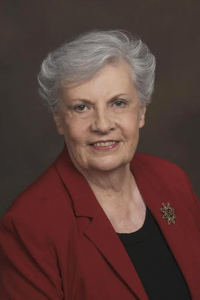David sat back with a satisfied sigh. In another week he and his organization were going to celebrate real victory! Because of his work and management of a capital campaign, the goal of nearly $3 million had been reached–and ahead of schedule. Besides that, he had incrementally increased the annual fund income and added to the endowment fund, in spite of the dire economic circumstances of the country and his city.
The constituents and friends of his organization had pitched in with unprecedented vigor, and he felt the warm satisfaction of having led in that team spirit. Seeing a volunteer who had hesitated to get involved in the first place accompany him to close a major gift had been one of the highlights of his professional life. According to what he had learned, particularly through The Fund Raising School training he acquired over time, having a peer participate in major gift cultivation and solicitation was a significant success factor, and he was happy to give credit to his boss and volunteers for the significant sums they brought in. He knew his boss appreciated his work and enthusiastically participated in bringing the campaign to a successful closure.
Then his face clouded and he shut his eyes as a rush of memories stormed to the forefront. His euphoria faded as he remembered some conversations. First, he could still hear his boss telling him, “I’m retiring. Yes, I know. It’s a bit earlier than I had expected but now with this campaign behind us, I think I can do so and not leave you or the school in a lurch.” David sighed. His boss had been uncommonly supportive, he knew. He had heard plenty from his professional friends and in particular a senior-level fundraiser who finally quit her job because the better she did, the less her boss liked it since it demanded more activity and accountability on his part (the board was watching and wasn’t pleased with his avoidance tactics). His boss went on, “But we’ll have a major celebration and I will remind the search committee for my replacement that fundraising has been very important in building this organization to its present prestigious status.” David would miss him, but he was fairly confident that his success of the past five years of either reaching or exceeding his goals would carry him through the transition and on to more years at the institution.
Imagine his surprise when he learned that a consultant was being brought in to conduct an audit of his department. Presumably, the organization’s leadership wanted to see if they were on course and what they should consider for the future. Why? was the first thought that popped into David’s mind. Then he relaxed. With the growth of his program and his evident success, perhaps all the assessment would do would be to show that he was doing well, and perhaps even convince the leadership that his work deserved more support. He had quickly learned that the organization’s future focus was going to be on program development–not that they had anything for which to apologize, but it seemed like the physical plant and fundraising would not be a priority anymore.
David expected to be included in the preparations for the assessment. After all, that was accepted protocol, business as usual. Once again he was surprised when a consultant showed up, bypassed him, and began interviews. Wasn’t he going to be asked for recommendations on whom to interview, particularly donors and volunteers? Apparently not. David was justifiably insulted, and disappointed when he learned who had been selected for the interviews—that the deck had been stacked! Why? he once again had to ask himself. What was going on here? Should he take this as a hint? Was the fundraising program in danger of being downsized? Was he not needed anymore? Normally an upbeat person, David couldn’t fight the dejection and depression that hit him, and hard. Clearly, he was being marginalized. Maybe it was time to bow out rather than fight unworkable situations.
Finally he made the decision that it was better to resign while showing positive growth and much success, rather than risk a downturn in both funding income and his reputation. He took little comfort in the sympathy of his professional friends and family. He truly cared about the organization and this didn’t bode well for his department. He also worried about what would happen to his donors, those whom he had cultivated and had cared for with sincere feeling.
David gathered his wits and wisdom around him and began a job search. He had to learn how to present himself and his success, how to match his skills to a particular job opening and modify his resume accordingly, and he had to keep up his confidence and self-respect–perhaps the hardest task in view of what had happened.
As he proceeded on his job search during a tough economic time, he had to do a lot of personal evaluation and soul-searching. Did he really want to stay in fundraising, he asked himself? Was it time to turn to some other career experience and expertise he had acquired over the years? As we leave David to his job search, we can ponder along with him the following conclusions:
Life isn’t fair. Get over it.
It’s not about you. It’s about the leadership, and more often than not, it’s about the particular point in time in the organization’s life.
There’s only so much a professional can do. Sometimes circumstances divert a successful path.
No matter what you do as a fundraising professional, sometimes it just doesn’t work!
Sometimes it’s better to bow out while on top rather than go down with the ship (yes, he knew he was mixing metaphors but at that point he didn’t care).
P.S. I was recently asked if the content of my columns is real. Yes, every column is based on real-life incidents, sometimes a bit disguised by a combination of events and circumstances to protect the innocent and not divulge the identity of the not-so-innocent. If you have nightmares to share, send an e-mail.
 Just finished speaking at a fundraising professionals conference in North Carolina and during the lunch period a senior VP from a university updated us about tax issues. These are complicated and at times alarming issues for us, so it behooves us to be aware and knowledgeable, and maybe even take appropriate action within our professional associations. Here is the latest information from our collegial groups:
Just finished speaking at a fundraising professionals conference in North Carolina and during the lunch period a senior VP from a university updated us about tax issues. These are complicated and at times alarming issues for us, so it behooves us to be aware and knowledgeable, and maybe even take appropriate action within our professional associations. Here is the latest information from our collegial groups:

![]()


 PSI was represented at the ASI conference and subsequently assisted several who stopped by our exhibit. We value the efforts of ASI members and are happy to help them with advice and resources whenever possible.
PSI was represented at the ASI conference and subsequently assisted several who stopped by our exhibit. We value the efforts of ASI members and are happy to help them with advice and resources whenever possible.


 Until next time!
Until next time!
 Beginning this month, PSI staff and I will use this column for a biweekly update of:
Beginning this month, PSI staff and I will use this column for a biweekly update of: